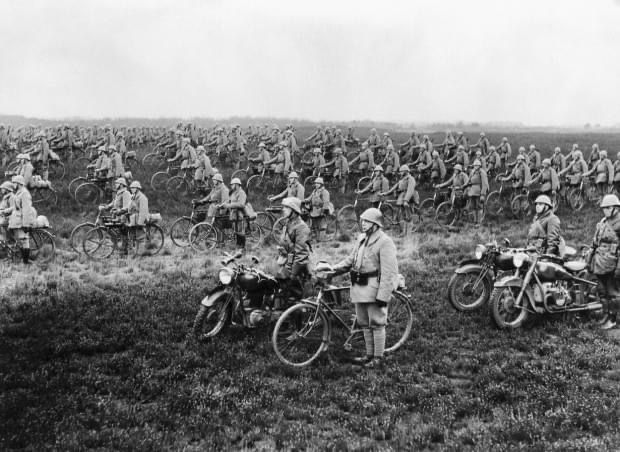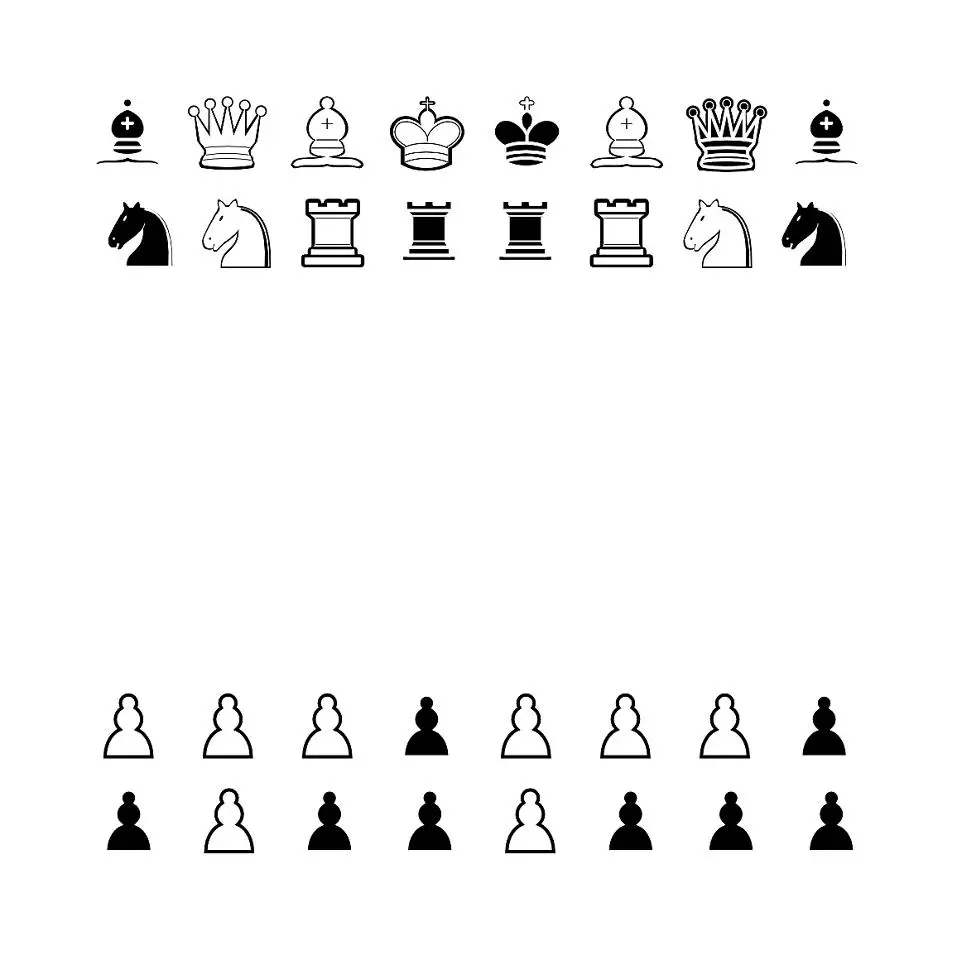A fixie without brakes? With that weight on the handle bar? With the most awkward stance because of that huge metal column piercing the riders sternum?
They really didn’t like their soldiers, didn’t they?
Pull the trigger to use your state-of-the-art recoil-assisted braking system.
this reminds me of gta vice city. I used to enable the cheat that allowed cars to fly. One problem: once the car was off the ground it lost traction and all power.
solution: spawn a tank, turn the turret backwards, and use recoil as the airborne thrust.
back then they were still trying to find a way to securely stop these bikes ☞ https://en.wikipedia.org/wiki/Bicycle_brake
I’m curious if the pedals even had a sprocket on that thing so the wheels could spin without the pedals spinning. That would give it a means to slow down, though it wouldn’t be comfortable. You’d have to spread your legs to coast and it would take some skill to get your feet back on the pedals without banging up your legs.
but the pioneers of fitting the freewheel to the safety bicycle were Linley and Biggs Ltd who fitted a freewheel from the summer of 1894, in part to assist the operation of their 2-speed ‘Protean’ gear.
By 1899 there was widespread adoption in UK bicycle manufacture of the freewheel, usually combined with the back-pedal brake, and conversions were offered to existing bicycles.
In 1899 the same system in the USA was known as the “coaster brake”, which let riders brake by pedaling backwards and included the freewheel mechanism. At the turn of the century, bicycle manufacturers within Europe and America included the freewheel mechanism in a majority of their bicycles but now the freewheel was incorporated in the rear sprocket of a bicycle unlike Van Anden’s initial design.
deleted by creator
Whats that?
deleted by creator
The recoil wouldn’t be that bad. Apparently the M1895 was loaded with 6mm Lee Navy at around 2,200J muzzle velocity and a cyclic fire of 450/min. That’s quite manageable. In comparison, the M249 is a shoulder mounted gun of 1,800J, 850/min. That’s 50% more recoil to manage without a bicycle frame to support the firearm.
deleted by creator
I don’t believe the machine gun is intended to be fired while on the move. You’d have to be grabbing that grip at your crotch, aiming without the sights, all the while peddling and steering. That’s quite the tall order. Even under ambush conditions you’d want to get out of the area ASAP, something a bicycle would do better at than on foot.
My presumption is this is intended to be a fast and light machine gun placement. Speedy deployment and movement of machine gun nets without needing to carry all that weight, let along carrying a machine gun’s diet of ammunition, on your back is quite an advantage. Dismounting to get behind the gun isn’t a high bar nor particularly slow. I’m sure a soldier could be sending lead downrange in a matter of seconds. Essentially the same role as light infantry support vehicles today.
deleted by creator
Us military? Pretty sure I saw this in detroit last week…just some guy.
Balancing on that must be shit
If you ever have the chance to visit the Anne Frank house in Amsterdam, during the educational talk they discuss why the Dutch army wasn’t able to resist the German tanks. They show this picture, and at least on our tour said it was ok to laugh.

Vietnam is a counter-example with quite effective bicycle troops. Their army and insurgency was supplied with bicycles on the Ho Chi Minh trail.
Amusing…but their web page goes into the more serious reasons. The main one being that the Nazis were going to carpet-bomb Dutch cities if they didn’t surrender.
The modern version:

This thing required some serious legs. No gears, bad roads if any. Christ…
Reminds me of this video https://youtu.be/ITY-fJJnPNQ?si=l1pcVR_gthmWhizK
Based honestly
A six axle light attack vehicle!!
Vehicles that don’t take user safety into consideration are the best vehicles
Worked for Luigi lmao
This doesnt make sense
He used a NYC ebike to get away



